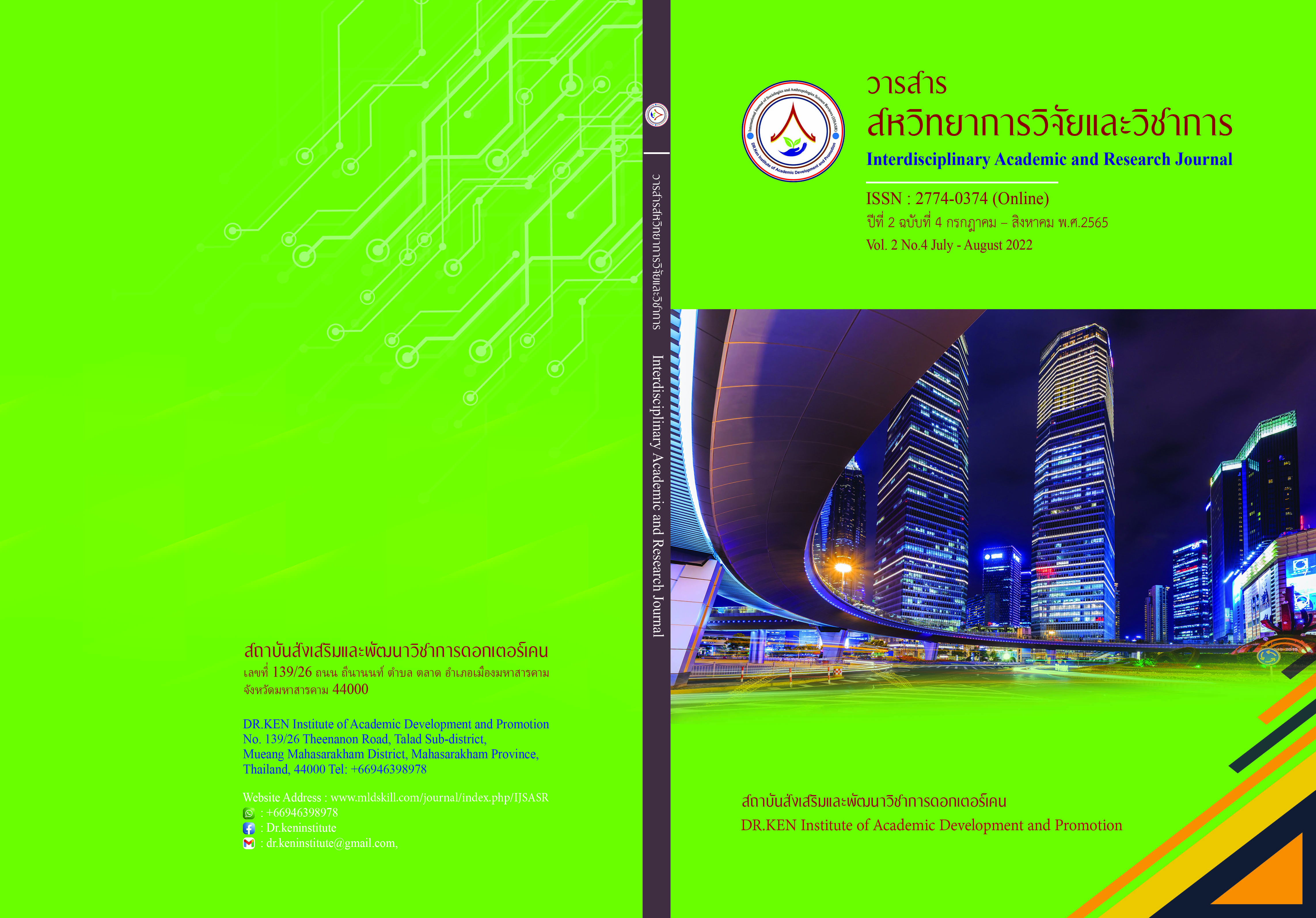Brand Building and Packaging Strategy for Strawberry Products to Increase Market Value: Case Study of Pong Yaeng Nok, Maerim district, Chiang Mai Province
DOI:
https://doi.org/10.14456/iarj.2022.81Keywords:
Branding; , Packaging; , Market Value; , Market OpportunityAbstract
Research for brand and packaging development of strawberry farmer groups is a collaborative work between the researcher and the community through participatory action research. This research aims to build a brand and create packaging with stories (story-telling) from the community. The research objectives are: (1) study and analyze the marketing situation that supports the promotion of strawberry products. (2) develop the strawberry brand based on stories from the community and (3) create the packaging for strawberry products to increase market value, expand market opportunity, and use for commercial benefits. The researcher conducted the study by using qualitative research. Data were collected through interviews and group discussions. Content analysis is used to analyze qualitative data. The result of the research following the research objectives are as followed: (1) The marketing situation to promote the marketing of strawberry products showed that the target group of strawberries was tourists from upcountry and the popular activity is to drive up to the Samoeng route to visit the strawberry farms, Mon Jam, Chrysanthemum flower fields, waterfalls, elephant camps, etc. This tourist group prefers to buy strawberries for themselves and as a souvenir when traveling back to their homes. The current branding and packaging of the group are like any other conventional brand. Secondly, in developing a brand that reflects the image of the community the group must create the brand’s personality that connects to the lifestyle of the target consumers. This is to make consumers feel that the brand of farmers in Ban Pong Yang Nok, Mae Rim District, Chiang Mai Province reflects the story of the community. Finally, strawberry packaging design for creating added value, expanding market opportunities, and for commercial purposes influence consumers’ purchasing decisions. Hence, it should attract attention and provide information about products and manufacturers on the packaging. The important findings can be used to create business shared values (CSV) from the integration of community production that leads to brand loyalty.
References
กนกวรรณ ดุษฎีพาณิชย์. (2555). การนำเสนอเนื้อหาทางเฟสบุ๊คแฟนเพจในประเทศไทย. สารนิพนธ์บริหารธุรกิจดุษฎีบัณฑิต สาขาวิชาธุรกิจการกีฬาและการบันเทิง: มหาวิทยาลัยศรีปทุม.
ชาย โพธิสิตา. (2550). ศาสตร์และศิลป์แห่งการวิจัยเชิงคุณภาพ. พิมพ์ครั้งที่ 3, กรุงเทพฯ: อมรินทร์พริ้นติ้งแอนด์พับลิชชิ่ง จำกัด (มหาชน).
ณรงค์ชัย พิพัฒน์ธนวงศ์. (2544). สตรอเบอรี: พืชเศรษฐกิจใหม่. กรุงเทพฯ: สำนักพิมพ์มหาวิทยาลัยเกษตรศาสตร์:
รดีวรรธน์ จันทนะโพธิ. (2558). กลยุทธ์การสร้างตราสินค้าบุคคล และพฤติกรรมของผู้ติดตามผ่านแฟนเพจกลูต้าสตอรี. วารสารการสื่อสารและการจัดการนิด้า. 1 (3), 81-103.
รัตพล มนตเสรีวงศ์ และนิตนา ฐานิตธนกร. (2558). ปัจจัยการสร้างคุณค่าของตราสินค้า คุณภาพในการบริการและเครือข่ายสังคมออนไลน์ที่ส่งผลต่อการตัดสินใจเลือกใช้บริการร้านกาแฟ: กรณีศึกษาร้านกาแฟแบรนด์ไทยแห่งหนึ่งในเขตกรุงเทพมหานคร. การค้นคว้าอิสระ (บธ.ม.) บัณฑิตวิทยาลัย :มหาวิทยาลัยกรุงเทพ.
สิฐพร พรหมกุุลสิทธิ์์. (2565). การออกแบบและพัฒนาบรรจุุภัณฑ์์ผลิตภัณฑ์์สตรอเบอรี่อบแห้ง จังหวัดเชียงใหม่่. วารสารวิจิตรศิลป์. (13) 1, 193-219.
Stir M., (2018). Product Quality Evaluation in Physical Stores versus Online Stores. Expert Journal of Marketing. 6 (1), 7-13.
Downloads
Published
How to Cite
Issue
Section
License
Copyright (c) 2022 วินยาภรณ์ พราหมณโชติ

This work is licensed under a Creative Commons Attribution-NonCommercial-NoDerivatives 4.0 International License.
Copyright on any article in the Interdisciplinary Academic and Research Journal is retained by the author(s) under the under the Creative Commons Attribution-NonCommercial-NoDerivatives 4.0 International License. Permission to use text, content, images, etc. of publication. Any user to read, download, copy, distribute, print, search, or link to the full texts of articles, crawl them for indexing, pass them as data to software, or use them for any other lawful purpose. But do not use it for commercial use or with the intent to benefit any business.
















.png)


